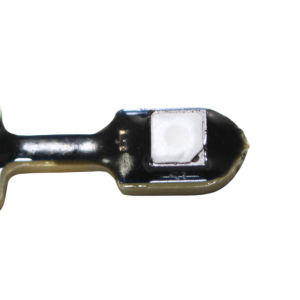Comparison of TRH series sensors
We offer growing variety of USB temperature and relative humidity sensors. Learn about the options and find the perfect one for your application.
Product table
| Product | Operating range | T° Accuracy (at 25°C, typical) |
%RH Accuracy (at 25°C, typical) |
Sensor enclosure | Cable type | Particle filter |
|---|---|---|---|---|---|---|
| TRH450 | -40°C to 125°C | ±0.1°C | ±1.5 %RH | Aluminium | Silicon | Yes |
| TRH420 | -40°C to 70°C | ±0.1°C | ±1.5 %RH | PET mesh | PVC | Yes |
| TRH320 | -40°C to 70°C | ±0.3°C | ±2.0 %RH | PET mesh | PVC | Yes |
| TRH200 | -40°C to 70°C | ±0.3°C | ±2.0 %RH | None | PVC | No |
Note: The above is a summary meant to highlight key differences. Please refer to individual product pages and datasheet for complete specifications.
Particle filter

Some models include a thin PTFE membrane that blocks more than 99.99% of particles over 200nm. This is recommended for harsh environments where extra protection against dust, soot and other contaminants is a requirement.
Enclosure types
The enclosure is what covers the digital sensor probe.
Cable type
Most models use standard PVC cables, but high temperature range models use Silicon cables.
- PVC: Low cost standard cable type, medium temperature range. Not suitable for extreme temperatures. Can crack if flexed at low temperature.
- Silicon: High temperature resistance, stays flexible even at low temperatures.
Need more information?
We would be glad to help! Please contact us with any questions or concerns you may have.